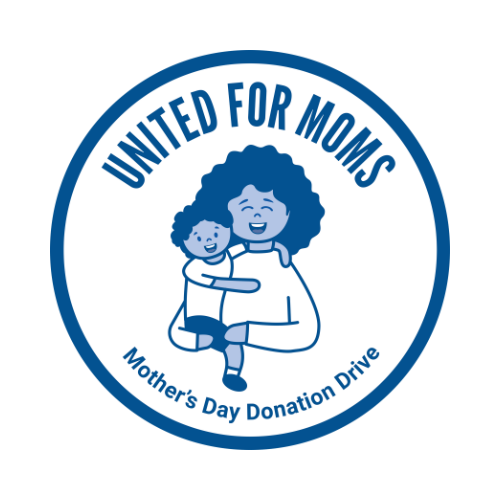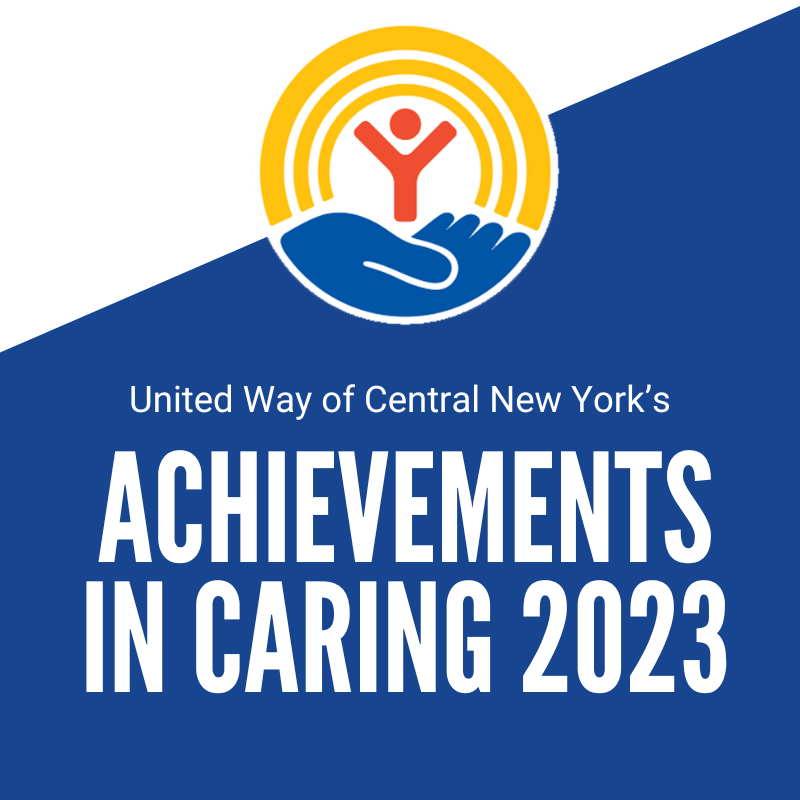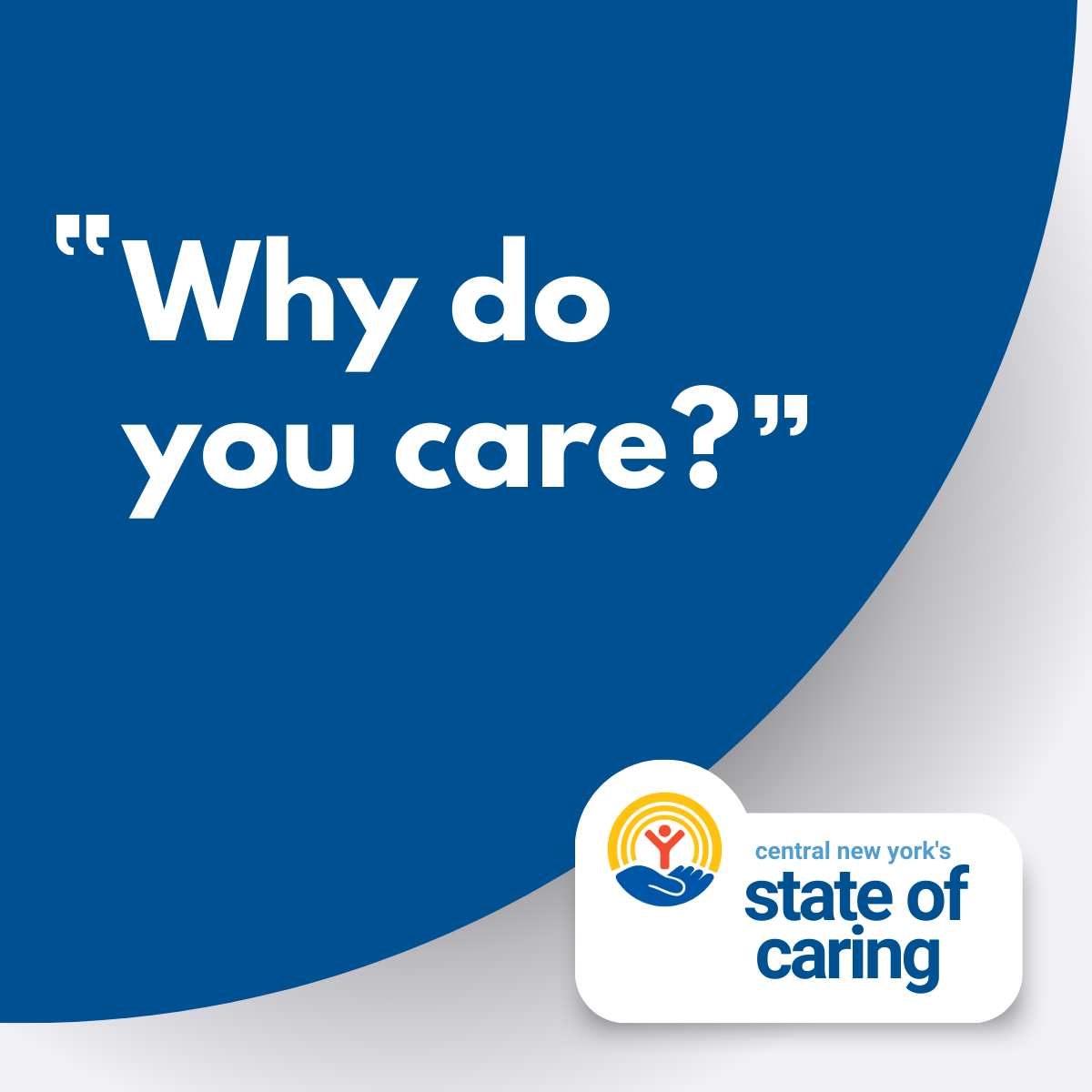All Too Common: Preventing Suicide in CNY
Every 11 minutes, someone in the United States takes their own life.1
In New York State, suicide is the second leading cause of death for people 10 to 34 years old and the fourth leading cause of death for people ages 35 to 54 years old.2
In Onondaga County, the rates of self-inflicted injury hospitalizations and suicide are higher than the New York State average.4
“There is no face or profile of people who are suicidal because it can affect anyone,” said Kristine Knutson, Program Coordinator, Crisis Intervention Services at Contact Community Services. “Struggling with thoughts of suicide is way more common than most people are aware of given that in a two-week period, one in 20 people can find themselves contemplating suicide.”
MENTAL HEALTH RESOURCES ARE ESSENTIAL
According to the CDC, in 2018 10.7 million American adults seriously thought about suicide, with 1.4 million attempting it. Of those who have died by suicide, 90 percent of victims had a diagnosable mental health condition at the time of their death.1
“It is important for a person to receive the support and resources they need to cope with their depression and thoughts of suicide,” said Knutson. “You can’t just will away suicidal thoughts or motivate your depression to be gone.”
Suicidal thoughts, much like mental health conditions, span across all ages, ethnicities, and household incomes, making suicide deaths and attempts a growing public health problem costing our nation over $69 billion in combined work-loss and medical costs.2
24/7, CONTACT CAN HELP
To meet the growing need for mental health services and suicide prevention resources, Contact Community Services has strived to foster healthy emotional development in Central New York since 1971. In collaboration with United Way of Central New York, Contact helps connect thousands of people to mental health and crisis intervention services every day through the Contact Hotline, their free, 24/7 confidential counseling and suicide prevention hotline.
“At Contact Community Services, it is our goal to reach through the phone, meet people where they are, and connect them to mental health resources and professionals so they can get the long-term support they need,” said Knutson. “Telephone-based counseling is a very special way to be with people when they need us and to create a sacred space for them when they may be experiencing the worst day of their life.”
The Contact Hotline responds to nearly 25,000 calls per year, providing support to people of all ages on a range of issues. The Hotline provides an accessible means for callers experiencing crisis to speak with a trained mental health professional who can discuss the caller’s feelings and connect them to additional resources.
“We have callers from elementary school children to the elderly that reach out to us to talk about their issues with people who are non-judgmental and willing to listen,” said Knutson. “When someone is in that dark helpless place, it is our duty at Contact to be right there with them so that we may help them see the light.”
SUSCEPTIBILITY IN MINORITY COMMUNITIES
Of our nation’s diverse population, marginalized groups such as people of color and sexual minority youth identifying as LGBTQ+ may be more susceptible to experiencing mental health challenges and increased rates of suicidal ideation.6
“I’ve been actively working with Central New York’s most marginalized communities for over 30 years. Issues surrounding mental health have always been one of our community’s most well-kept secrets, due to the stigma around mental health and the shame experienced by those who seek help,” said Helen Hudson, AFL-CIO Community Services Liaison at United Way of Central New York.
For people of color, there are strong cultural components in which feelings of shame or mistrust are prevalent surrounding mental illness, especially when it comes to expressing emotions to a stranger outside their family or community. A majority of mental health issues are rooted in trauma, stemming from experiences of violence and poverty, of which the city of Syracuse still struggles with having some of the nation’s highest rates of people of color living in poverty.
“I believe we are seeing more and more people of color, particularly those in impoverished black communities, experiencing higher rates of suicide and mental illness due to lack of resources and facilities that make mental healthcare services affordable and accessible to some of our community’s most vulnerable.”
To address these issues, Contact Community Services provides a range of mental health programs and services that are free and easily accessible.
“At Contact Community Services, we recognize the racial disparities that exist within the system of mental health and strive to increase cultural competency and make mental health services more accessible to those in need,” said Erica Brier-Kennedy, Clinical Supervisor at Contact Community Services.
Other mental health services available through Contact Community Services include:
Youth Development Program: Offers afterschool, summer learning programs, and social-emotional development activities to students from predominantly working-poor families
Student Assistance Program: School-based mental health/substance abuse program where counselors provide free, confidential assessments, counseling, and referral services to students and their families
Suicide-Safer Community Project: Provides evidence-based suicide prevention workshops that teach participants how to recognize warning signs, ask appropriate questions and seek referrals for further aid
KNOW THE SUICIDE WARNING SIGNS
While there is no single cause for suicide, a person may choose to take their life when a combination of life stressors and health issues converge to create feelings of hopelessness and despair. As outlined by the American Foundation for Suicide Prevention, recognizing and addressing the following warning signs could lead to saving someone’s life and keeping them safe.
Talk: A person contemplating suicide might talk about killing themselves, express feelings of hopelessness or having no reason to live, being a burden to others, or experiencing unbearable pain.
Behavior: Actions that may be cause for concern include increased substance abuse, researching ways to end their life (i.e. buying firearms, researching toxic chemicals), isolating from family and friends, reaching out to friends and loved ones to say “goodbye,” giving away prized possessions, demonstrating signs of aggression.
Mood: People considering taking their own life often express moods such as depression, anxiety, loss of interest in hobbies/daily life, irritability, shame, agitation/anger.
“Every day, people can make a positive impact on someone’s life and you don’t need a degree or fancy letters next to your name in order to show you care,” said Knutson. “The reason why we help people in our community is because we want them to know they are not alone. There is hope for them and there is no shame in seeking help.”
To reach the Contact Hotline for free, confidential, 24/7 counseling and suicide prevention services, call 315-251-0600 in Onondaga County. For more information on Contact Community Services and other mental health programs and resources, call 2-1-1 or visit 211cny.com.
Links to Resources
- Center for Disease Control “Preventing Suicide” https://www.cdc.gov/violenceprevention/suicide/fastfact.html
- American Foundation for Suicide Prevention, “Suicide Facts & Figures: United States 2020” https://www.datocms-assets.com/12810/1587128056-usfactsfiguresflyer-2.pdf
- American Foundation for Suicide Prevention, “Suicide Statistics” from CDC Data & Statistics Fatal Injury Report for 2018” https://afsp.org/suicide-statistics/
- Onondaga County Community Health Assessment and Improvement Plan 2020-2021 http://www.ongov.net/health/documents/OnondagaCountyCHA-CHIP.pdf
- American Foundation for Suicide Prevention, “Suicide Facts & Figures: New York 2020” https://www.datocms-assets.com/12810/1589487348-2020-state-fact-sheets-new-york.png
- Center for Disease Control and Prevention “Preventing Suicide: A Technical Package of Policy, Programs, and Practices” https://www.cdc.gov/violenceprevention/pdf/suicideTechnicalPackage.pdf












